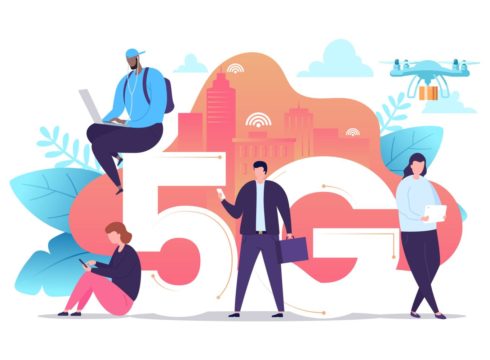India’s proposal to ITU allows the use of only 26 Ghz band for mobile services leaving no room for 5G rollout
The proposal promises usage with conditions that 5G services will not interfere with satellite operations
Reducing the power limit of base stations will increase the cost of 5G services for telecom operators
Inc42 Daily Brief
Stay Ahead With Daily News & Analysis on India’s Tech & Startup Economy
Deployment of the much-awaited 5G cellular services in India may be delayed further and is unlikely to happen within the next year. According to the Indian government’s recent proposal to International Telecommunication Union (ITU), it allows, as per the instructions from Indian Space Research Organisation (ISRO), use of only 26 Ghz band for mobile services with conditions to ensure that the 5G services will not interfere with satellite operations.
The proposal, if accepted by ITU, will increase the cost of 5G services multifold as the operators will have to set up a large number of base stations now, thereby making it difficult for them to roll out 5G. The increased cost would also make 5G launch less attractive for telcos that are already battling with falling revenues.
The government has also agreed to reduce the power level of the 5G base stations to eightieth of conventional mobile base stations . The power of 5G stations in this band has been reduced to 0.5 watt as against the conventional base station at 40 watts.
ITU, under the United Nations, will finalise use of 26 GHz band for 5G services at a conference next month in Egypt. ITU is the international body which sets a global benchmark for wireless services.
Why Does This Matter For 5G in India?
5G is the so-called fifth-generation cellular network technology with incredibly high download and upload speeds over the mobile network, lower latency than 4G and therefore more stable connections and wider applications. 5G networks are likely to provide a download speed of 1Gbps, which is at least 100 times the existing data speeds. It will allow users to download even HD versions in seconds. 5G also works under a wider frequency to ensure zero network network congestion.
Mobile networks can transport data at speeds up to 1 Gbps under 4G currently. With 5G wireless networks, performance will increase with data speed as fast as 10 Gbps. Telecom operators in the US have already started testing 5G networks in select regions. Besides the US, South Korea and Japan are also working on deploying 5G soon.
Reducing the power limit of base stations will tremendously increase the cost of 5G services as the operators will have to set a large number of base stations compared with a conventional mobile system. This can also decrease the quality due to difficulty in finding space for these sites. The mobile operators thus may not be to go ahead with 5G rollout.
Why Telecom Operators May Not Be Able To Roll Out 5G Now
According to a research and development associate of a multinational telecom equipment maker that spoke to ET, the department of telecom (DoT) proposal hardly leaves any room for 5G rollout in India.
“Based on the proposal, DoT will have only around 1.25 to 1.5 Ghz of spectrum in 26 Ghz for 5G services in total. An operator will require at least 1 Ghz of spectrum in a higher frequency band, proposed 26 Ghz band at present, to roll out 5G as stated by ITU. The critical 5G applications may fail if sufficient bandwidth is not provided,” he was quoted as saying.
The move might be a big disappointment for smartphone makers as well as those who have already planned to launch 5G smartphones. Samsung, LG, OnePlus, Xiaomi and other companies have already announced 5G smartphones this year. Apple plans to launch a 5G-enabled phone in 2020. India being a huge market for smartphones, this move would be a setback for premium smartphone makers as well as they would have to offer different SKUs in India.
When the mobile service providers upgraded from 3G to 4G, customers had to buy new 4G SIM cards and buy new 4G LTE enabled phones to access the better speeds. Something similar will happen in the case of 5G as well.
The 5G base station will be able to cover only 25-30 metre distance based low power requirement. This means 5G rollout will be around four times more expensive than the rest of the world. The DoT had originally planned to roll out 5G in 2020. However, if the latest proposal is approved, the auction of 5G services in the current financial year seems difficult.
Note: We at Inc42 take our ethics very seriously. More information about it can be found here.


